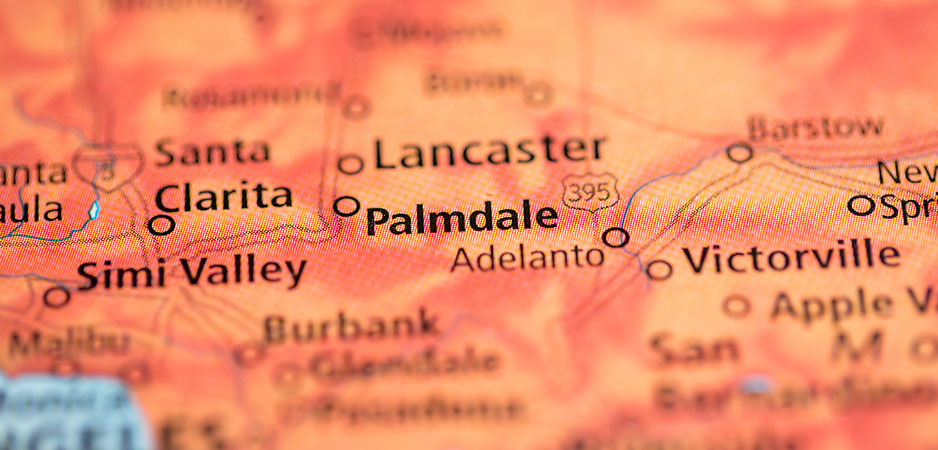On the morning of June 10, 2020, the body of a young black man, Robert Fuller, was found hanging from a tree in a park opposite City Hall in Palmdale, California. The police initially ruled the death a suicide. Suspicions were raised though when the body of a 38-year-old homeless African American man was discovered hanging from a tree in Victorville, a town some 50 miles south of Palmdale. Again, the police initially ruled the death to have been a suicide. A coincidence? Since these deaths occurred in the middle of nationwide Black Lives Matter protests, it seems hard not to be suspicious. The FBI has now entered the case.
Racially-motivated lynching was a primarily Southern and border-state phenomenon. The Tuskegee Institute’s database records some hundreds of these murders in the decades following Reconstruction. Until American entry into World War II in 1941, Southern mobs killed dozens of black people during the Depression decade. Since Congress was dominated by Southern legislators, bills seeking to make lynching a federal crime failed to be enacted into law. Astonishingly, this continues to be the case as of June 2020.
Out of Fashion
Despite violent Southern resistance to racial integration during the postwar civil rights era, between approximately 1958 and 1970, lynching went out of style. Race-based bombings and shootings took its place. Out of fashion but not out of mind. For example, on occasion, nooses were found in the lockers of newly hired African American policemen and firemen when they seemed to be breaking long-standing racial barriers in these professions.
This brings us to Palmdale. Palmdale and the adjacent town of Lancaster are located about 35 miles northeast of Los Angeles in the Antelope Valley, on the edges of the Mojave Desert. These communities are close to Edwards Air Force Base, the site of flight-testing of advanced fighter planes during the Cold War — the early sequences in the film “The Right Stuff” were located at Edwards. Rents and housing prices are somewhat lower than those in Los Angeles. Palmdale-Lancaster attracts largely lower-middle-class residents who don’t mind living in a high desert environment surrounded by Joshua trees and tumbleweed. In recent years, these communities have attracted a growing number of African American families for the same reasons that drew whites to the area.
Palmdale-Lancaster has a political history that draws our attention. During the postwar era, John Wesley Swift, initially a follower of the Reverend Gerald L.K. Smith, a prominent anti-Semitic preacher, founded his own church in Lancaster in 1948. Like Smith, Swift toured southern California seeking to revive the Ku Klux Klan in the Los Angeles area and beyond. The effort met with some success: A cross was burned near Big Bear Lake shortly after Swift’s visit. Swift also played a major role in the formation of the California Anti-Communist League and the equally racist and anti-Semitic Christian National Crusade.
Our interest in Swift’s ecclesiastical career is based on the fact he was crucial in the transformation of what had been British-Israelism — a religious doctrine that asserted British people were the descendants of the 10 lost tribes of Israel — into the new postwar American religion of identity. From his church in Lancaster, Swift preached that the Jews were the “seed of Satan” and that people of color were sub-human “mud people” who should be deported from North America and returned to their countries of origin in Latin America and sub-Saharan Africa.
One of Swift’s congregants at his church in Lancaster was Richard Girnt Butler, an engineer working at a Lockheed Aircraft facility in the area. Michael Barkun, in “Religion and the Racist Right,” reports that Butler found Swift’s sermons electrifying and quickly became an adherent of the new religion: “He [Swift] was the total turning point in my life. The light turned on. He had the answers I was trying to find.”
Of Particular Interest
In 1973, Butler left Swift and his Lancaster church behind and formed his own Aryan Nations (and Church of Jesus Christ Christian) at a compound near Hayden Lake in Idaho. Butler’s departure and Swift’s later demise was not the end of Lancaster-Palmdale as a location for radical-right activities.
Of particular interest are the Nazi Low Riders (NLR). Originally a prison gang and an offshoot of the more widely known Aryan Brotherhood, the NLR first appeared outside California penitentiaries — the California Youth Authority especially — in the early 1980s. Despite its name, the Southern Poverty Law Center (SPLC), the Anti-Defamation League and other watchdog organizations describe the group as both violent and essentially white supremacist rather than anti-Semitic. Specializing in illegal drug trafficking, the NLR has been able to recruit members beyond its original cluster of young ex-inmates.
The NLR has also proven durable. As of 2019, the group was still active. So far as our suspicions are concerned, the Low Riders have been visible both in the Palmdale-Lancaster area and San Bernardino County, where the town of Victorville is located. Several years ago, NLR members were arrested for attacking a black man in Palmdale.
The Low Riders are hardly unique. California abounds with what the SPLC labels as hate groups. According to the SPLC’s annual report, in 2019 there were 88 such groups active in the Golden State, many of them clustered in the Los Angeles area. Not all of them, though, are sufficiently violent to carry out a nighttime lynching. Those that do would include the neo-Nazi Atomwaffen Division and Feurkrieg Division, some of whose members have already killed opponents.
It may be that the two deaths by hanging mentioned at the beginning of this observation were suicides, as the police concluded originally. Or, if murder was involved and these really were lynchings, the perpetrators need not have had an affiliation with an organized group. Still, given the current heightened atmosphere in the United States, it is hard not to be suspicious.
*[The Centre for Analysis of the Radical Right is a partner institution of Fair Observer.]
The views expressed in this article are the author’s own and do not necessarily reflect Fair Observer’s editorial policy.
Support Fair Observer
We rely on your support for our independence, diversity and quality.
For more than 10 years, Fair Observer has been free, fair and independent. No billionaire owns us, no advertisers control us. We are a reader-supported nonprofit. Unlike many other publications, we keep our content free for readers regardless of where they live or whether they can afford to pay. We have no paywalls and no ads.
In the post-truth era of fake news, echo chambers and filter bubbles, we publish a plurality of perspectives from around the world. Anyone can publish with us, but everyone goes through a rigorous editorial process. So, you get fact-checked, well-reasoned content instead of noise.
We publish 2,500+ voices from 90+ countries. We also conduct education and training programs
on subjects ranging from digital media and journalism to writing and critical thinking. This
doesn’t come cheap. Servers, editors, trainers and web developers cost
money.
Please consider supporting us on a regular basis as a recurring donor or a
sustaining member.
Will you support FO’s journalism?
We rely on your support for our independence, diversity and quality.






